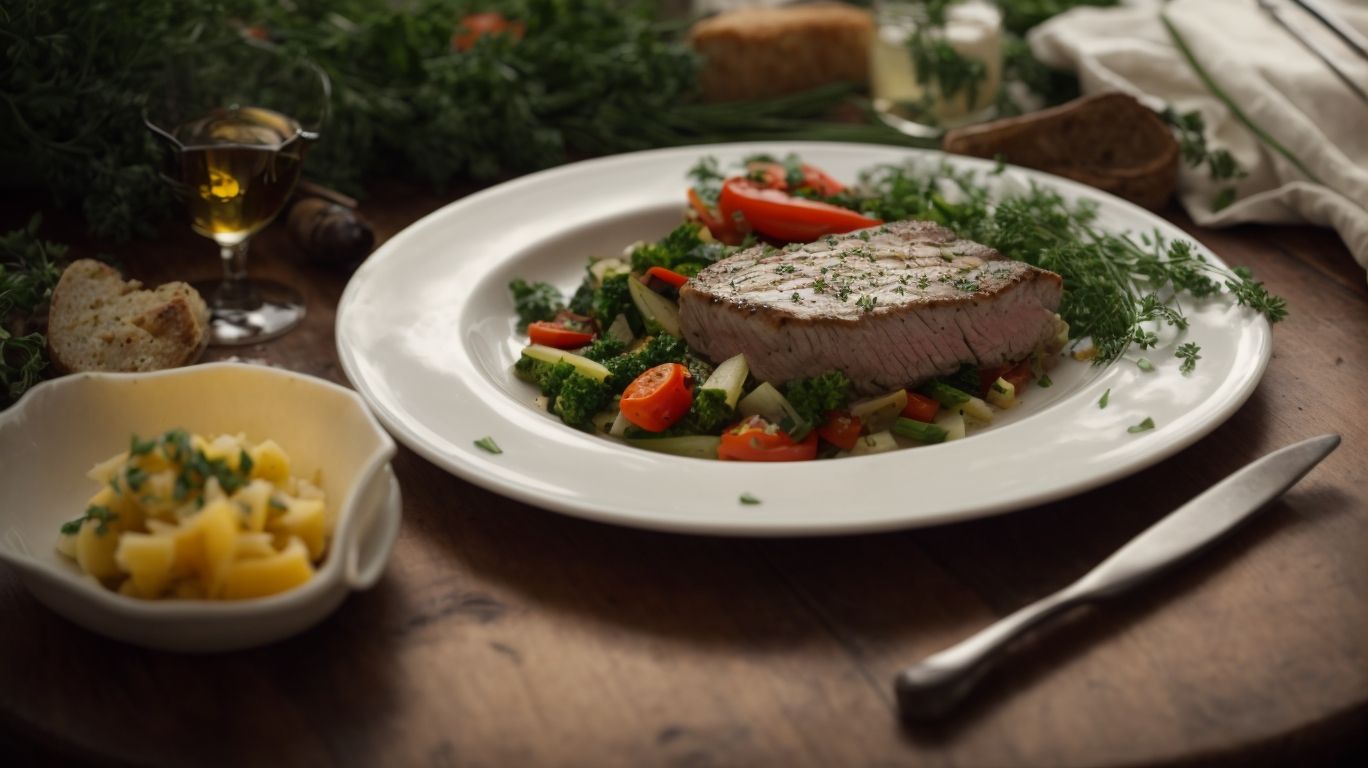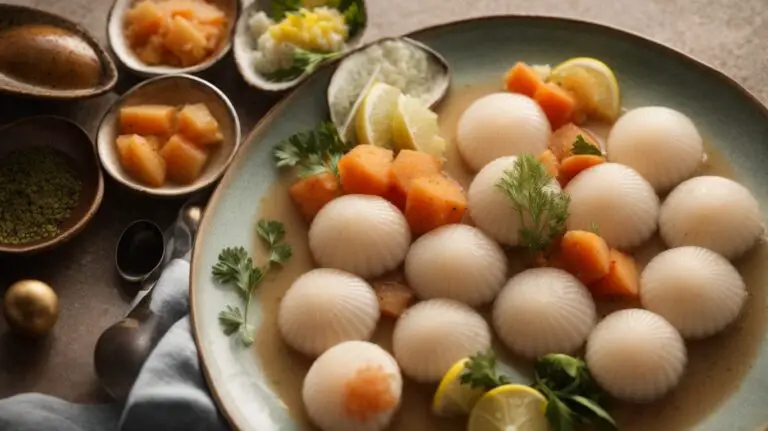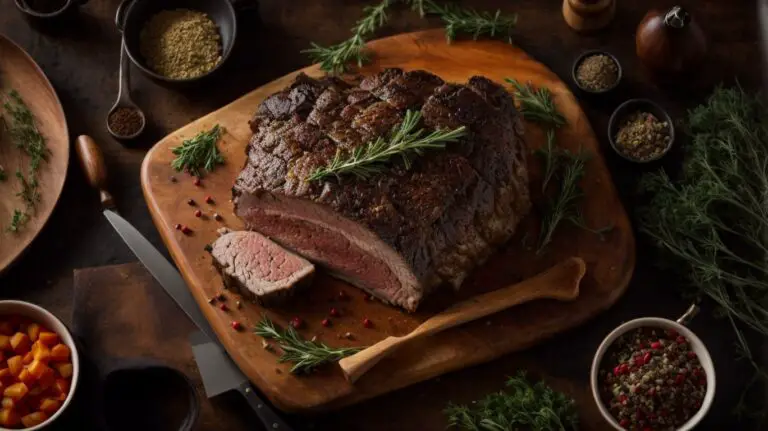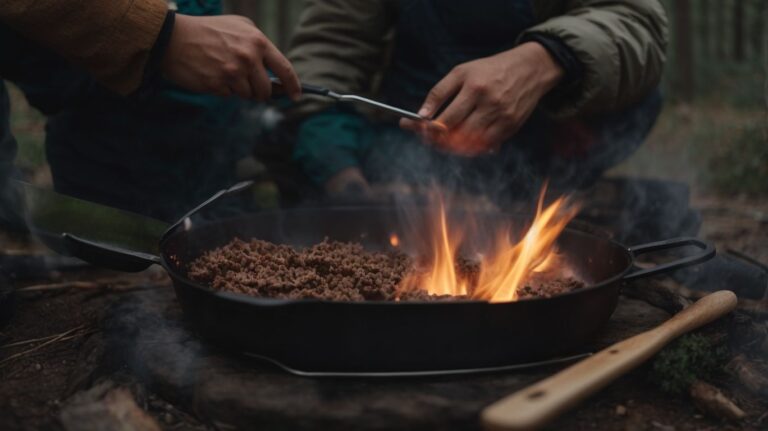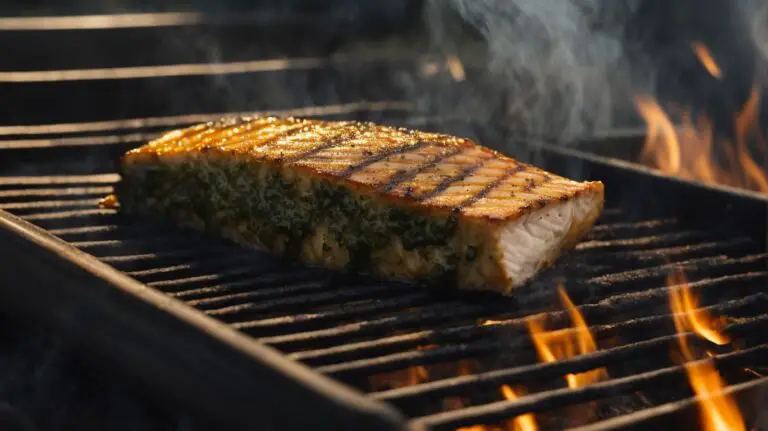How to Cook Veal?
Are you looking to elevate your culinary skills and impress your guests with a delicious veal dish?
In this article, we will explore everything you need to know about cooking veal – from understanding the different cuts to selecting the best meat for your recipe.
We will also dive into various cooking methods, such as sautéing, roasting, and grilling, to help you create a mouthwatering veal dish that will leave everyone asking for seconds.
Let’s get cooking and discover the secrets to preparing and serving veal like a pro!
Key Takeaways:
What is Veal?
Veal is a tender and flavorful meat that comes from young calves, known for its delicate texture and mild taste.
Due to its tenderness and mild flavor, veal is highly versatile in the culinary world, lending itself well to a variety of cooking methods such as grilling, roasting, and braising. This meat is often prized for its fine grain and pale pink color, setting it apart from other meats like beef or pork. When preparing veal, it’s important to ensure proper cooking to retain its tenderness and juiciness, as overcooking can result in toughness. Veal dishes are often paired with complementary flavors such as lemon, herbs, and creamy sauces to enhance its natural taste.
What are the Different Cuts of Veal?
Veal comes in a variety of cuts, including bone-in veal chops, loin chops, rib chops, and porterhouse chops, each offering a unique texture and flavor profile.
Bone-in veal chops, cut from the rib section, are prized for their tenderness and rich flavor due to the bone contributing extra taste during cooking. Loin chops, sourced from the loin area, are exceptionally tender and perfect for quick, high-heat cooking methods like grilling or pan-searing.
Rib chops, known for their delicate texture and great marbling, are excellent for slow cooking methods such as braising. On the other hand, porterhouse chops, a combination of tenderloin and strip loin, offer a nice balance of tenderness and flavor making them ideal for both grilling and roasting.
How to Choose the Best Veal for Cooking?
When selecting veal for cooking, it’s essential to choose cuts that are tender and have a rich flavor profile to enhance your culinary creations.
One key characteristic to look for in high-quality veal is tenderness, as it ensures a melt-in-your-mouth texture when cooked to perfection. Additionally, marbling in veal, which refers to the intramuscular fat distribution, is crucial for adding depth of flavor and juiciness to your dishes. Freshness is another critical factor; opt for veal that has a pinkish hue and a clean smell, indicating it’s not past its prime. By prioritizing tenderness, marbling, and freshness, you can elevate the flavors and dining experience of your veal dishes.
How to Prepare Veal for Cooking?
Preparing veal for cooking involves seasoning the meat with herbs, spices, and marinades to infuse flavor and enhance its natural taste.
Regarding seasoning veal, gentle flavors like garlic, rosemary, and thyme work wonderfully to complement the meat’s delicate flavor profile. Marinating veal in a mixture of olive oil, lemon juice, and a touch of Dijon mustard can add depth and tenderness to the meat.
To tenderize veal, consider using a meat mallet to flatten thin slices, breaking down the muscle fibers to ensure a tender outcome when cooked. For a more hands-off approach, you can also use a natural enzyme-based tenderizer like pineapple or kiwi puree in your marinade to help soften the meat.
What are the Different Ways to Tenderize Veal?
Tenderizing veal can be achieved through methods such as braising, which helps break down connective tissues and enhance the meat’s tenderness.
Marinating veal is another effective technique that not only infuses flavor but also tenderizes the meat through the enzymatic action of ingredients like citrus juices, yogurt, or vinegar. Properly marinating veal for several hours or overnight can significantly improve its texture and juiciness. Selecting the right cuts of veal, such as veal shoulder or veal shank, can make a difference in the tenderness of the final dish. Cooking veal over low heat for a longer period, whether in a slow cooker or through slow-roasting, can further soften the meat and make it succulent.
How to Cook Veal on the Stove?
Cooking veal on the stove allows for quick and flavorful preparations, with techniques like searing in a skillet to lock in juices and create a golden crust.
To begin, ensure your skillet is preheated over medium-high heat with a drizzle of oil to prevent sticking. Place the veal cutlets in the hot skillet, making sure not to overcrowd them, to allow for proper searing. Sear each side for about 2-3 minutes until a beautiful golden crust forms, locking in those succulent juices. Remember, the key is to maintain consistent heat to avoid overcooking or drying out the veal. This technique ensures a tender, juicy result that will delight your taste buds.
Sautéing
Sautéing veal in butter is a classic method that results in tender meat with a rich flavor profile and golden-brown exterior.
When sautéing veal, it’s crucial to use butter for its rich flavor and ability to enhance the meat’s taste. Start by heating a skillet over medium-high heat and adding a knob of butter to melt. Place the veal pieces in the pan, making sure not to overcrowd them, as this can lead to steaming instead of searing. Season the veal with salt, pepper, and fresh herbs for extra depth of flavor.
Pan-Frying
Pan-frying veal with black pepper creates a flavorful crust and juicy interior, making it a popular method for cooking veal cutlets.
To achieve the perfect pan-fried veal with black pepper seasoning, start by seasoning the veal cutlets generously with salt and coarsely ground black pepper on both sides, ensuring even coverage for maximum flavor infusion. Heat a skillet over medium-high heat and add a small amount of oil, just enough to coat the bottom of the pan. Carefully place the seasoned veal cutlets in the hot pan, ensuring they are not overcrowded, allowing them to sear properly. Cook each side for about 2-3 minutes until a golden-brown crust forms.
Braising
Braising veal in a flavorful stew with white wine results in tender, succulent meat infused with aromatic flavors, ideal for hearty meals.
Braising is a cooking technique that involves slow-cooking meat in liquid at low heat, allowing the flavors to meld deliciously. When you add a splash of white wine to the mix, it not only imparts a subtle acidity but also tenderizes the meat further, resulting in a rich, complex taste. The use of aromatic herbs and vegetables, such as garlic, thyme, and onions, enhances the depth of flavors in the stew, creating a harmonious blend of savory notes.
How to Cook Veal in the Oven?
Cooking veal in the oven through roasting with aromatic herbs creates a tender and flavorful dish that is perfect for special occasions.
When preparing to roast veal in the oven, start by preheating the oven to 350°F. This moderate temperature allows the meat to cook evenly while preserving its juiciness. Next, generously season the veal with a blend of rosemary, thyme, and garlic, ensuring that the flavors infuse beautifully during the cooking process. Place the seasoned veal on a roasting rack in a shallow pan to allow hot air to circulate around the meat, promoting a crispy exterior.
Roasting
Roasting veal with olive oil results in a moist and succulent dish with a crispy exterior, showcasing the meat’s natural flavors and tenderness.
When roasting veal, it’s essential to ensure the meat is at room temperature before cooking, allowing for even cooking throughout. Preheat your oven to 375°F for the ideal cooking environment, and be generous with the olive oil application to enhance the browning process and create a beautiful crust on the veal. Season the meat liberally with a blend of rosemary, thyme, garlic powder, and a pinch of salt and pepper for a flavor-packed result.
- Consider searing the veal in a hot pan before transferring it to the oven to seal in the juices and add extra depth of flavor.
- Keep a close eye on the meat while roasting, using a meat thermometer to ensure it reaches an internal temperature of 145°F for medium-rare or 160°F for medium doneness.
- Let the veal rest for a few minutes before slicing it to retain its juiciness, and serve with a drizzle of balsamic reduction for a touch of acidity that complements the richness of the dish.
Baking
Baking veal in the oven with a blend of seasonings creates a comforting and aromatic dish that is simple to prepare yet full of flavor.
Regarding selecting the perfect seasoning blends for your veal, consider classic combinations such as garlic, thyme, and rosemary for a traditional taste, or experiment with bolder flavors like smoked paprika and cumin for a unique twist.
Preheat your oven to the ideal temperature, typically around 375°F (190°C), to ensure that the veal cooks evenly and retains its juiciness. Remember to allow your veal cuts to come to room temperature before placing them in the oven, which helps in achieving a perfectly cooked dish.
The cooking duration will vary depending on the size and thickness of the veal pieces, but as a general guideline, aim for an internal temperature of 145°F (63°C) for medium-rare and 160°F (71°C) for medium, ensuring safe consumption without compromising on tenderness.
How to Cook Veal on the Grill?
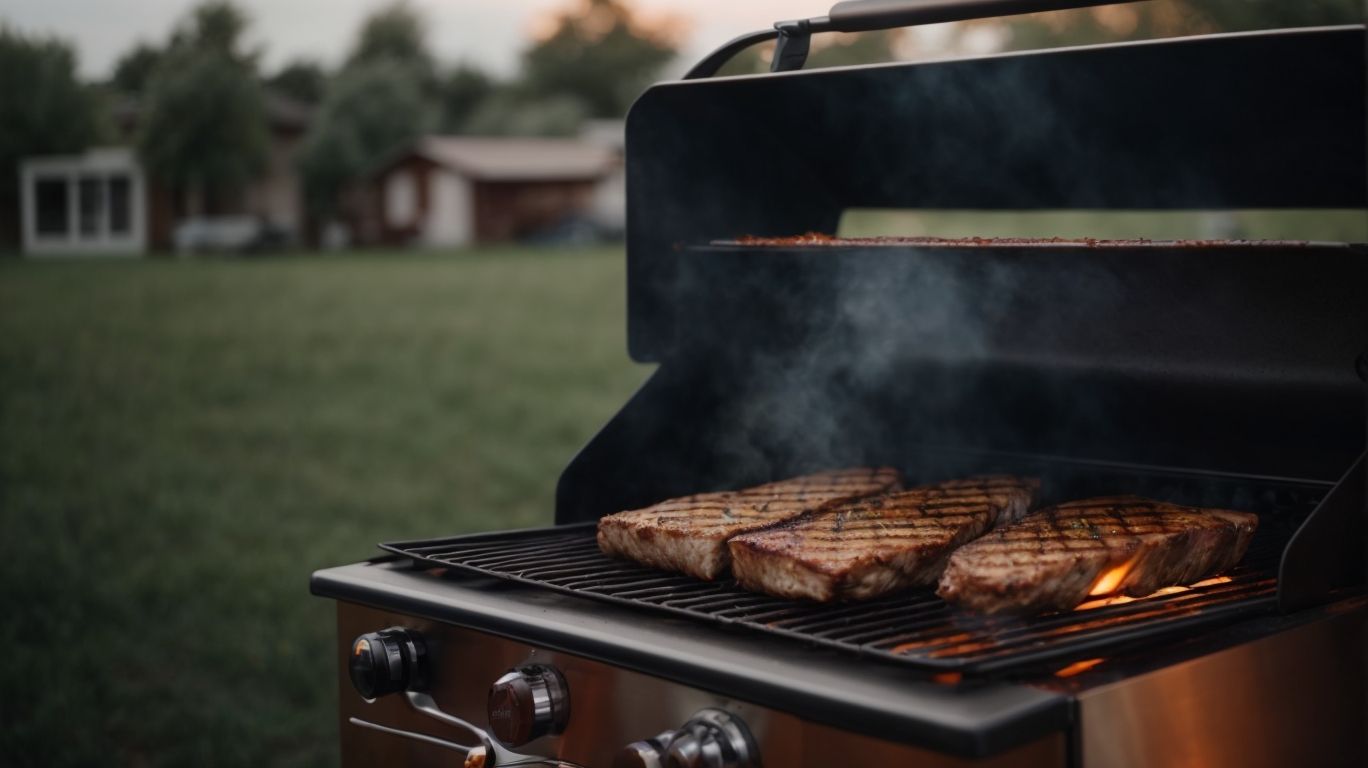
Credits: Poormet.Com – Ethan Garcia
Grilling veal over an open flame imparts a smoky char and caramelized exterior, enhancing the meat’s natural flavors with a hint of smokiness.
One key aspect of grilling veal successfully is managing the heat of your grill. For optimal results, start by preheating your grill to medium-high heat, around 375-400°F. This initial burst of heat will help to sear the outside of the veal, locking in its juices and flavors. However, once the veal is on the grill, you may need to adjust the heat by moving the meat to cooler spots on the grill or lowering the flame if using a gas grill.
Grilling Veal Chops
Grilling veal chops with a variety of seasonings creates a delicious and tender dish that showcases the natural flavors of the meat with a smoky essence.
When preparing your veal chops for the grill, start by choosing a dry rub or marinade to enhance its flavor profile. Popular options include garlic, rosemary, thyme, or a simple mixture of salt and pepper. Don’t be afraid to experiment with different herbs and spices to find your perfect combination.
To achieve those iconic grill marks on your veal chops, preheat the grill to medium-high heat and ensure it is properly cleaned and oiled. Place the chops diagonally on the grates for a few minutes before rotating them 90 degrees to create those beautiful crosshatch patterns.
Temperature control is crucial when grilling veal chops to maintain their tenderness. Aim for an internal temperature of 145°F for medium-rare or 160°F for medium. Use a meat thermometer to avoid overcooking and drying out the meat, ensuring a juicy and flavorful result.
Grilling Veal Cutlets
Grilling veal cutlets marinated in herbs and olive oil results in a flavorful and succulent dish that is perfect for outdoor gatherings and summer meals.
When preparing the marinade for the veal cutlets, consider using a blend of fresh rosemary, thyme, and garlic to infuse the meat with aromatic flavors. Allow the cutlets to marinate in the mixture for at least 30 minutes, or preferably overnight, to enhance the taste further.
Regarding grilling the marinated veal cutlets, preheat the grill to medium-high heat and lightly oil the grates to prevent sticking. Place the cutlets on the grill and cook for about 3-4 minutes per side, ensuring they develop a beautiful char while remaining juicy and tender inside.
For ideal results, it’s essential to let the grilled veal cutlets rest for a few minutes before slicing and serving. The resting period allows the juices to redistribute, resulting in a more succulent and delicious final dish.
How to Know When Veal is Cooked?
Determining when veal is cooked to perfection involves using a meat thermometer to check the internal temperature, ensuring it reaches the desired level of doneness.
It is crucial to remember that veal should be cooked to a safe internal temperature to avoid any risk of foodborne illnesses. Whether you prefer your veal rare, medium-rare, or well-done, knowing the right temperatures is key. For rare veal, the internal temperature should reach 125°F (51.5°C), medium-rare is around 145°F (62.5°C), and well-done veal should reach 160°F (71°C).
Visual cues can also aid in determining doneness. A pinkish hue with slightly translucent juices indicates rare doneness, a warm reddish-pink center with clear juices is a sign of medium-rare, while no pink color and clear juices show well-done.
How to Serve and Enjoy Veal?
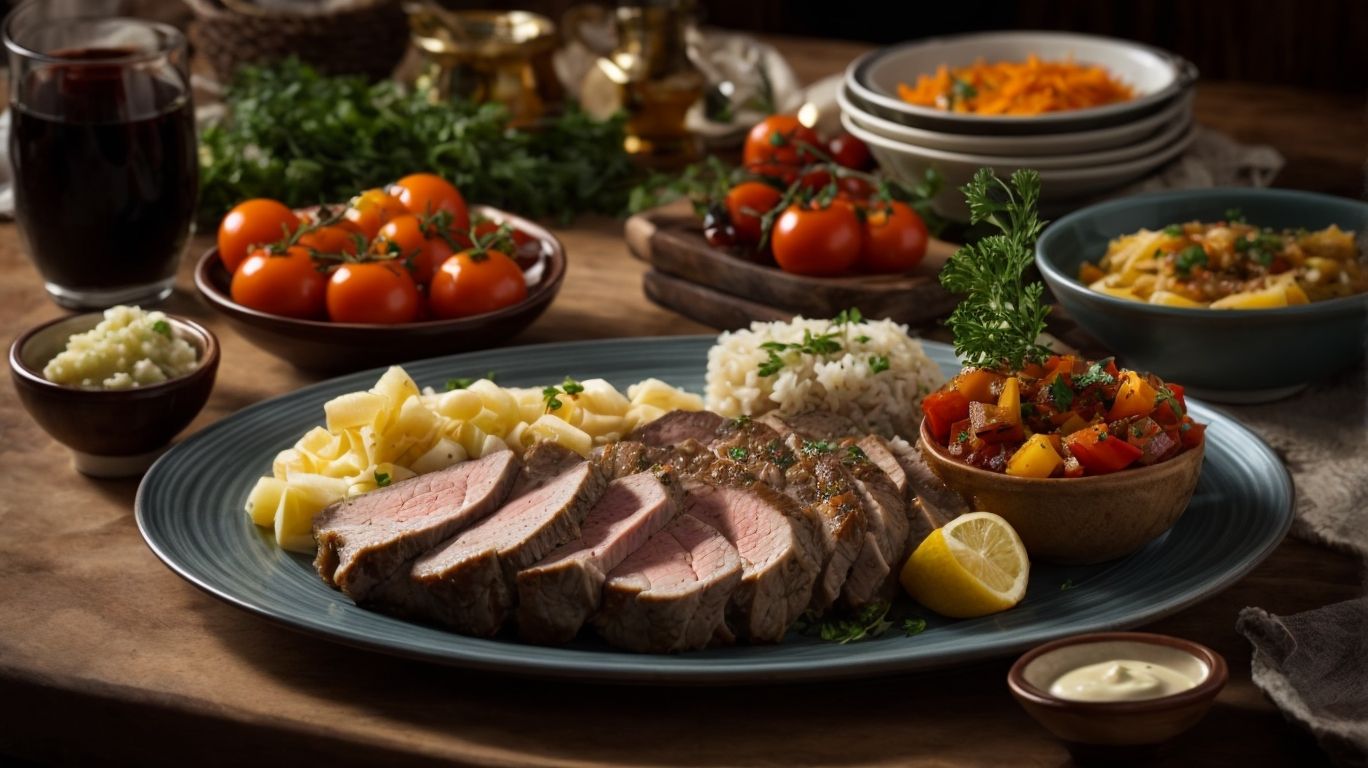
Credits: Poormet.Com – Benjamin Clark
Serving and enjoying veal can be a delightful experience, especially when paired with a flavorful sauce that complements the meat’s natural richness and tenderness.
Regarding choosing the right sauce for your veal dish, classics like a creamy mushroom sauce or a tangy lemon butter sauce are popular choices that enhance the delicate flavor of the meat. For those looking for a more robust option, a rich red wine reduction can elevate the dish to a gourmet level.
On the side, consider serving veal with side dishes that balance the richness of the meat. Light and fresh options like a crisp green salad or steamed asparagus make excellent choices to accompany veal. For a heartier pairing, roasted vegetables or creamy mashed potatoes are perfect additions.
Regarding presentation, remember that veal dishes shine when served on warm plates to maintain their temperature and enhance the dining experience. Garnishing with a sprinkle of fresh herbs or a drizzle of sauce can add an elegant touch to the dish.
Frequently Asked Questions
What is veal and how is it different from other types of meat?
Veal is a type of meat that comes from young cows, usually male calves. It is different from other types of meat because it is typically leaner and has a more delicate flavor.
What are some popular ways to cook veal?
Some popular ways to cook veal include grilling, roasting, braising, and pan-searing. It can also be used in dishes like veal parmigiana or veal piccata.
How do I know when veal is cooked to perfection?
The best way to determine if veal is cooked to perfection is by using a meat thermometer. The internal temperature should reach 145°F for medium-rare, 160°F for medium, and 170°F for well done.
Can veal be substituted for other types of meat in recipes?
Yes, veal can be substituted for other types of meat in many recipes. However, keep in mind that veal has a milder flavor and may require adjustments in cooking time and seasonings.
What are some tips for tenderizing veal?
To tenderize veal, you can use a meat mallet to pound it thin or marinate it in an acidic mixture. You can also ask your butcher to cut the veal into thin slices for you.
What is the best way to store leftover cooked veal?
Leftover cooked veal should be stored in an airtight container in the refrigerator for up to 3-4 days. To reheat, place it in a covered dish in the oven or microwave until warmed through.

